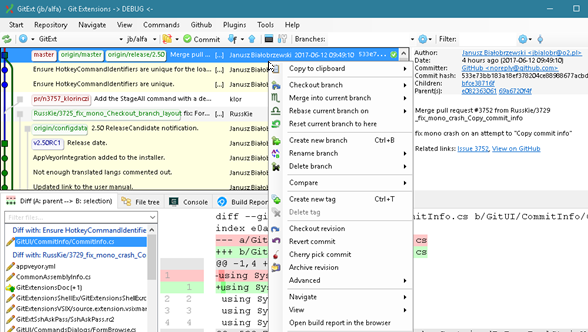SnailSVN is a TortoiseSVN-like Apache Subversion (SVN) client for Mac OS X, implemented as a Finder extension. SnailSVN allows you to access the most frequently used SVN features, from the Finder context menu directly. SnailSVN also adds icon overlays to your SVN working copies in Finder. SvnX is an graphical client to subversion (svn) for Mac OS X. Not the most pretty client but svnX is open source and has been actively supported for many years. Share improve this answer follow. SmartSVN - a cross-platform solution that will work on Windows, Mac and Linux. Pysvn - another cross-platform client, free of course. /ableton-live-lite-9-32-bit-download.html. SCPlugin - Mac-only, integrates into Finder. SCPlugin was inspired by TortoiseSVN, so if you're a fan of that one then maybe give it a go! The KolibriOS developer team makes use of a central SVN source code repository. Not only the KolibriOS kernel and its drivers, but also almost all known open-source program and library can be found on this system.
- Opensource Svn Client For Mac
- Open Source Svn Client For Mac Os
- Open Source Svn Client For Mac Download
- Open Source Svn Client For Mac Catalina
Article version: Free, Pro, and Team
Article version: Free, Pro, and Team
GitHub repositories can be accessed from both Git and Subversion (SVN) clients. This article covers using a Subversion client on GitHub and some common problems that you might run into.
In this article
GitHub supports Subversion clients via the HTTPS protocol. We use a Subversion bridge to communicate svn commands to GitHub.
Supported Subversion features on GitHub
Checkout
The first thing you'll want to do is a Subversion checkout. Since Git clones keep the working directory (where you edit files) separate from the repository data, there is only one branch in the working directory at a time.
Subversion checkouts are different: they mix the repository data in the working directories, so there is a working directory for each branch and tag you've checked out. For repositories with many branches and tags, checking out everything can be a bandwidth burden, so you should start with a partial checkout.
On GitHub, navigate to the main page of the repository.
Above the list of files, click Code.
To clone the repository using HTTPS, under 'Clone with HTTPS', click . To clone the repository using an SSH key, including a certificate issued by your organization's SSH certificate authority, click Use SSH, then click . To clone a repository using GitHub CLI, click Use GitHub CLI, then click .
Make an empty checkout of the repository:
Get the
trunkbranch. The Subversion bridge maps trunk to the Git HEAD branch.Get an empty checkout of the
branchesdirectory. This is where all of the non-HEADbranches live, and where you'll be making feature branches.
Creating branches
You can also create branches using the Subversion bridge to GitHub.
From your svn client, make sure the default branch is current by updating trunk:
Next, you can use svn copy to create a new branch:
You can confirm that the new branch exists in the repository's branch dropdown:
You can also confirm the new branch via the command line:
Making commits to Subversion
After you've added some features and fixed some bugs, you'll want to commit thosechanges to GitHub. This works just like the Subversion you're used to. Edit your files, and use svn commit to record your changes:
Switching between branches
To switch between branches, you'll probably want to start with a checkout of trunk:
Opensource Svn Client For Mac
Then, you can switch to another branch:
Finding the Git commit SHA for a Subversion commit
GitHub's Subversion server exposes the Git commit sha for each Subversion commit.

To see the commit SHA, you should ask for the git-commit unversioned remote property.
With this commit SHA, you can, for example, look up the corresponding Git commit on GitHub.
Further reading
- 'Subversion properties supported by GitHub'
Help us make these docs great!
Open Source Svn Client For Mac Os
All GitHub docs are open source. See something that's wrong or unclear? Submit a pull request.
Open Source Svn Client For Mac Download
Make a contributionOpen Source Svn Client For Mac Catalina
Or, learn how to contribute.
Latest Posts
- Tubemate For Android Free Download 2.0 9
- From The Depths Free Download
- Hypersnap 6 Free Download
- Wondershare Video Converter Crack Mac
- Norton License Key Generator Free Download
- Antares Auto Tune 8.1 Win Repack
- Bmw Scanner 1.4.0.9 Download
- Download Game Burnout 3 Takedown Apk Data
- Adobe Photoshop 32 Bit Free
- God Of War Ascension Iso File Download For Ppsspp